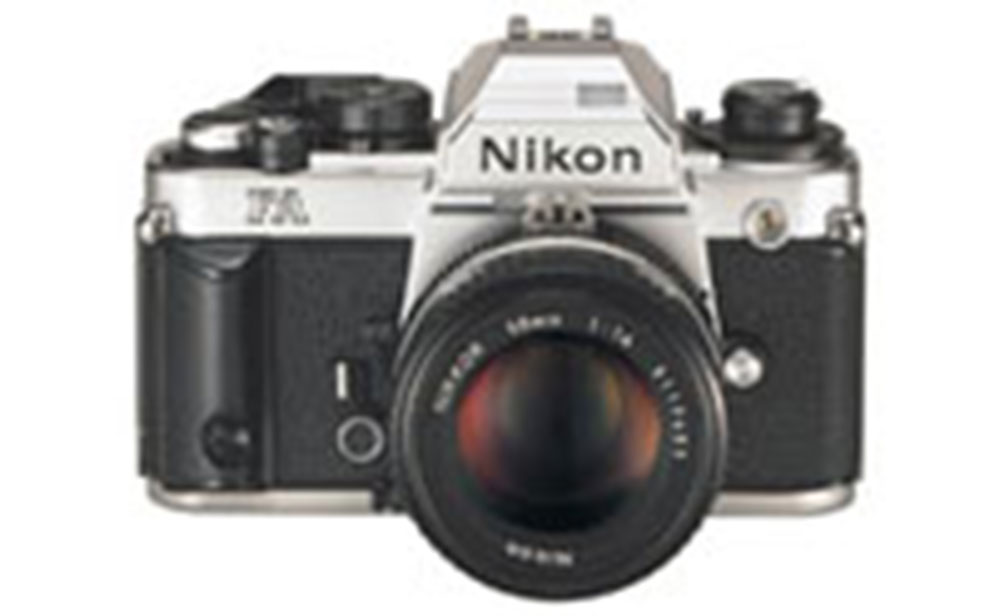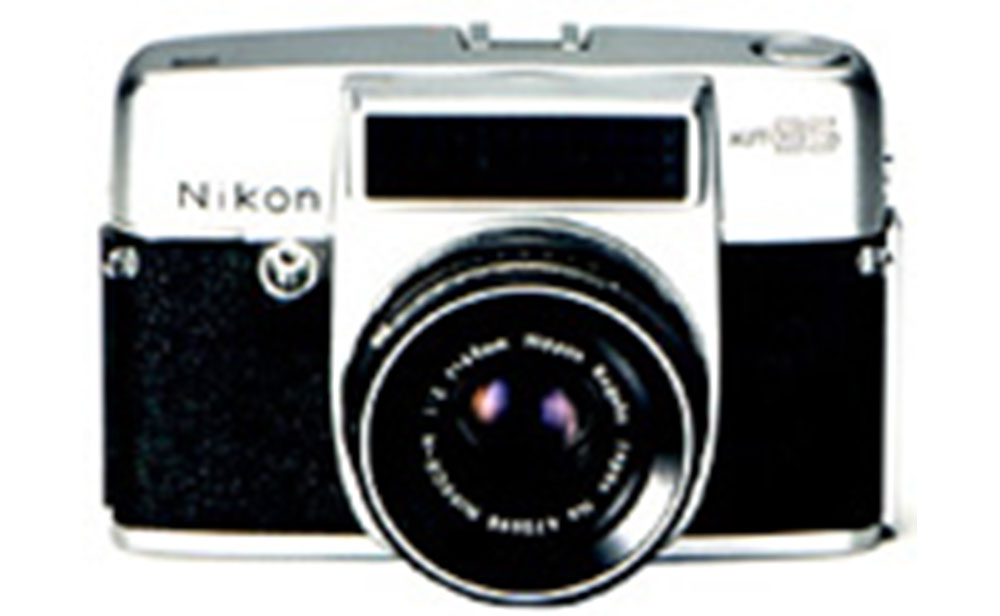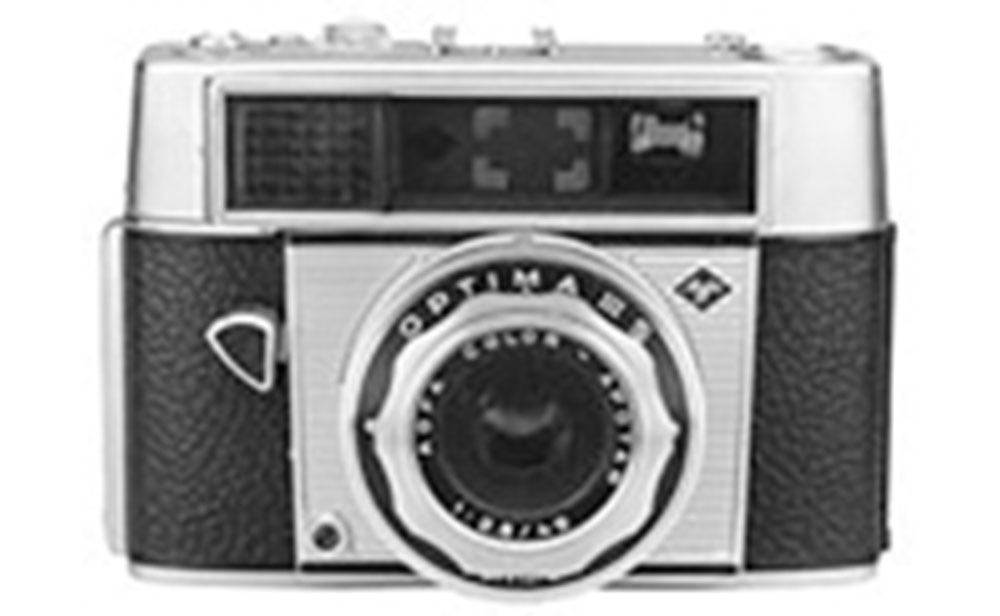Part 4 : "Nikon AUTO 35"
Nikon's first shutter-priority AE (Auto exposure) Single Lens Reflex (SLR) camera

First, may I ask you a question ?
"Which Nikon's SLR camera was the first to feature the shutter-priority AE function ?"
You may have eliminated the Nikomat EL (Nikkormat EL) as a possible answer because although it is Nikon's first AE camera, it is an aperture-priority AE camera. Thus you might have chosen the "Nikon FA" (Photo) as the first AE camera within shutter-priority.
If so, you are mistaken.
People always misunderstand. Nikon's first AE camera with shutter-priority already existed almost 20 years before the Nikon FA released in 1983 and awarded "1st Camera Grand Prix". It is the "Nikon AUTO 35" mentioned here.
At times, this common misperception has been fostered by the media. For example,
an "Asahi Camera" magazine series featured a "New Face Diagnosis" article on the Nikon FA in the December 1983 issue stating that "FA (syncopation) was Nikon's first camera also equipped with shutter-priority AE mode [S]". After all, the Nikon AUTO 35 might have been forgotten.
Unique Design

The Nikon AUTO 35 (Photo) was introduced in September 1964, the year of the Tokyo Olympics.
Lens-shutter SLR cameras, which were sold in the market as less expensive and popularized model of the focal-plane shutter SLR cameras, had been improved and were equipped with quick-return mirrors and AEs.
It was natural that Nippon Kogaku K. K. released an updated product in this increasingly popular product category.
The Nikon AUTO 35 bolstered the heritage of Nikon's lens-shutter SLR camera product lineup, which included the NIKKOREX 35 (1960), NIKKOREX 35II(35/2) (1962 : See Vol. 1) and NIKKOREX Zoom 35 (1963 : See Vol. 2). This camera also was to be this lineup's final model.

(Photo courtesy of the Asahi sonorama)
Look at this camera, and the first thing you'll notice is its unique design. That is, flat-top design devoid of pentaprism triangular roof which features usual SLR camera. The porro-mirror finder was a distinctive feature of the external appearance of the NIKKOREX 35 and NIKKOREX Zoom 35, but this latest model used a pentaprism as usual. Thus there was no necessity to adopt such a flat-top design.
The reason why this design was used is not certain, but a primary source explains that the camera adopted the design of German camera company Agfa's 'Optima' Series (OPTIMA IIIS at left).
These "Optima" cameras were not SLR cameras. However, German lens-shutter cameras of the time were designed with an emphasis on height rather than width.
Perhaps the designers thought this type of design would become popular in Japan (Nippon) as well.

Nikon AUTO 35
Owing to the AUTO 35's flat top design, there is large empty space inside the top cover area (See Photo). It is obvious that the priority was given to the design.
The AUTO 35 seems to have large ( 144 [W] x 93 [H] x 74 [D] mm ) body. However, it had a reputation of being easy to hold. Indeed, its width and height are almost identical to that of the aforementioned Nikon FA ( 142.5 [W] x 92 [H] x 64.5 [D] mm ). Could there be a certain size that makes a camera fit well in hand ?
Challenge for Quick-return mirror mechanism
For this camera, pentaprism finder was restored rather than porro-mirror finder which had been used since the NIKKOREX 35 came out. Why ? Perhaps because porro-mirror viewfinder provided lower magnification and darker views. Another reason is that the eyepieces were placed uncomfortably low on the camera bodies and thus it was difficult to look into.
The quick-return mirror posed an especially difficult challenge. An SLR camera's quick-return mirror has to receive a signal (via mechanical movement like that provided by a lever) from the shutter that exposure is complete. With that signal, the inclined reflex mirror goes down and returns.
But with a lens shutter, the signal from the shutter is weak, so there is not enough power to unlock the latch which releases the spring to drive the mirror down.
A focal-plane shutter mechanism moves heavier or larger parts like the shutter curtain, so there is no problem to release the mirror for falling/returning operations. However, with the lens shutter, there is only the power to move the light and small shutter blades, so it cannot transfer a strong signal to the mirror mechanisms. Unlocking this latch of the spring that moves the large mirror is like "moving a Cadillac with a small engine of a sub-compact car", which is almost impossible.
All lens-shutter SLR cameras have this problem, and thus other companies were also facing this challenging. In one case, the German camera company Voigtländer used a quick-return mirror for its Ultramatic (1963), but didn't in the Ultramatic CS : (1965) model that followed, apparently because of this problem.
Currently, some medium-format cameras are lens-shutter SLR style, but they don't employ the quick-return mirror for the same reason.
To solve this problem, the Nikon AUTO35 added an extra device (i.e. mechanicall amplifier system) to achieve power which would be used to control the mirror mechanism. Instead of directly unlocking the latch with the signal from the shutter, it unlocks a device that unlocks the latch, maintaining stable quick-return operation. This would not have been a problem if ultra-small motors were installed to move the mirror or aperture, as is usual in contemporary cameras.
There's a legend in the Camera Development Dept., that the designers in charge was troubleshooting the entire night before the release of the Nikon AUTO35, then was upbraided by the Ohi Factory Labor Service Department (Human Resources and Labor Department). After their "all-nighter", the designers worked the next day when they should have been resting !
The Lens-shutter SLR market
After this, 35mm [135] format lens-shutter SLR cameras started to disappear. These cameras provided the benefit of an SLR mechanism such as SLR viewfinder at a low cost and were more advanced than focal-plane shutter SLRs in exposure meter mechanisms and AE systems.
However, when it came to quick-return systems, these complicated mechanisms' reliability started to become a problem. Also lens interchangeability gives greater possibilities for focal-plane shutter cameras. Sooner or later, shutter manufacturers started to supply unit-type focal plane shutters at a reasonable cost (See Vol.3 "NIKKOREX F" on "Copal Square"), and the lens-shutter SLR cameras became obsolete.
Now I strongly feel that the Nikon AUTO35 should be considered a perfect, highly-evaluated model together with unique design in a lens-shutter SLR camera lineup.
A final question :
Let me give you another question : "Among Nikon focal-plane shutter cameras, which was first to use shutter-priority 'TTL' AE ?"
If you guessed it as "Nikon FA" , you're wrong again !
The answer is "Nikon F2 Photomic S + EE Control Unit DS-1".
Note
This issue first appeared in "Nikkor Club Quarterly" magazine , published by the Nikkor Club, and was later revised for "Camera Review : Classic Cameras" published by Asahi Sonorama.
It was re-revised for Nikon's webpage.
Products, brands and companies names are trademarks or registered trademarks of their respective companies.
Camera Chronicle
Archives of corporate history subject matter related to Nikon cameras, including rare materials, as well as product photos of cameras and lenses.
